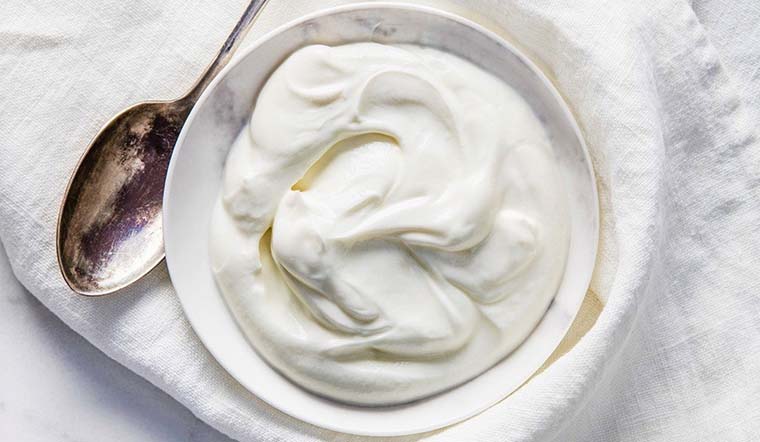Left Sour Cream Out Overnight? Here’s Everything You Need to Know
It’s happened to all of us – you finish up a meal, stick the leftovers in the fridge, and accidentally leave something out on the counter. Come morning, you open the fridge and have a moment of panic upon realizing the sour cream or other dairy product has been sitting out all night.
What do you do in this situation? Can sour cream that’s been left out at room temperature overnight still be safe to eat?
As someone who loves cooking with sour cream and hates food waste, I’ve pondered this dilemma a few times myself. After doing extensive research on proper dairy food handling, I want to share everything I’ve learned about how long sour cream can sit out unrefrigerated, signs of spoiled cream, whether it’s ever safe to eat sour cream left out overnight, and how to store it properly.
Let’s dive in!
How Long Can Sour Cream Sit Out at Room Temperature?
According to the United States Department of Agriculture (USDA) and other food safety experts, the rules for leaving sour cream out at room temperature are:
- If the temperature is above 40°F, sour cream should not be left out for more than 2 hours before being discarded or refrigerated again.
- If the room temperature rises above 90°F, the safe sitting time for sour cream drops to just 1 hour before bacteria can grow to dangerous levels.
Why such a short allowable time outside the fridge? Well, as a dairy product made from cream, sour cream is highly perishable and susceptible to bacteria growth when warm. This is especially true for the temperature danger zone between 40-140°F.
Leaving dairy products like sour cream, yogurt, custard, cream cheese and others in this zone for too long allows food-poisoning bacteria like Staphylococcus, Salmonella, and E. coli to rapidly multiply to dangerous levels.
Since room temperature falls within or above the danger zone, sour cream left out overnight would far exceed the 2 hour safety limit.
Now let’s explore…
What Exactly Happens When Sour Cream is Left Out Too Long
When sour cream is left at room temperature for multiple hours or overnight, the bacteria have the ideal conditions to grow and multiply. Refrigeration helps slow bacteria growth, but once sour cream warms to “danger zone” temperatures, here is what happens:
- Bacteria rapidly multiply – bacteria like Staphylococcus aureus thrive between 40-100°F and can double in number every 20 minutes. Mold and yeast also grow quickly.
- It leads to spoilage – the growing bacteria populations cause sour cream to spoil.
- Toxins are produced – bacteria give off waste products or toxins that can cause illness.
Here are some visible signs that your sour cream has spoiled after sitting out too long:
- Unpleasant taste and smell – Foul, rancid, or “off” smell and taste. The tangy flavor turns sour.
- Change in color – It may change from white to yellowish, greyish, or brownish.
- Mold growth – Spots of fuzzy green, black, blue or white mold.
- Slimy texture – The sour cream loses its creamy texture and becomes slimy.
- Gas bubbles – Bubbles or froth may form as gases are given off.
While spoiled sour cream will display obvious signs like smell, taste and appearance changes, harmful bacteria can also be present without altering the product’s look or smell. For example, Staphylococcus aureus release toxins that cause illness but don’t make sour cream look or smell bad. So even if your sour cream still seems normal after sitting out overnight, it could have dangerous bacteria present. Let’s discuss this…
Is it Ever Safe to Eat Sour Cream Left Out Overnight?
The experts agree – once refrigerated sour cream has been left out at room temperature beyond 2 hours, it is not longer safe to eat.
The USDA, FDA, and other health organizations unanimously state it should be discarded, not tasted or eaten.
Why is it so unsafe? Here are the biggest risks of eating sour cream left out overnight:
- Food poisoning – Harmful bacteria like Staphylococcus aureus release toxins that can cause nausea, vomiting, and diarrhea. Vulnerable groups like pregnant women, children, and the elderly are at highest risk.
- Pathogen infection – Bacteria like Salmonella, Listeria, Campylobacter, and E. Coli can all multiply in sour cream, especially if contaminated. They can cause serious illness if ingested.
- Mold toxicity – Some molds like Penicillium commune release toxic byproducts that cause allergy-like symptoms or respiratory irritation.
It’s just not worth the risk. The nutrients you might gain from that sour cream aren’t worth jeopardizing your health and safety. It’s always better to be safe and throw it out than risk getting sick.
How To Tell if Sour Cream is Still Good or Spoiled
If you’re trying to decide whether your sour cream is still fresh or has spoiled after sitting out too long, look for these signs:
- Check the color – it should be white. Any yellow, grey or brownish discoloration indicates spoilage.
- Check the texture – it should be smoothly creamy. Runny or slimy texture is a red flag.
- Give it a sniff – it should have a tangy diary smell, not rancid or rotten odors.
- Taste a tiny bit – it should taste tart and tangy without any “off” flavors. If it tastes odd, trust your senses.
- Look at the date – if it is past the “sell by” or “use by” date, it could be expired.
- Consider temperature and time – did it exceed 2 hours above 40°F or 1 hour above 90°F? If so, don’t take chances.
However, relying on sight, smell and taste is not completely foolproof. Staph bacteria, for example, don’t make sour cream look, smell or taste bad as they release toxins. So the 2 hour room temperature rule is really the best check.
When in doubt, just throw it out. Getting sick is never worth the risk just to avoid wasting a bit of sour cream.
Proper Storage and Handling of Sour Cream
Storing sour cream properly and using good handling practices will help prevent spoilage and foodborne illness. Here are some tips:
- Refrigerate sour cream at 40°F or below. Store it toward the back, not in the door where temperature fluctuates.
- Keep it tightly sealed in its original container if possible. This retains freshness best.
- Once opened, it will maintain top quality and flavor for 1-2 weeks past the “sell by” date when refrigerated.
- Check “sell by” and “use by” dates and follow them. Use opened sour cream by the “use by” date.
- When cooking with sour cream, only scoop out the portion needed and refrigerate the rest immediately. Limit time sitting out.
- Use clean utensils each time you handle it. Never put a spoon that touched food back into the sour cream.
- Handle carefully to avoid cross contaminating via hands, counters, drips etc.
Proper refrigeration, sealing, labeling, and careful handling will help ensure your sour cream stays fresh and safe.
What To Do If You Accidentally Leave Sour Cream Out Overnight
We all slip up in the kitchen sometimes. If you discover your sour cream has been left out overnight, follow these steps:
- Check how long it was left out at room temperature. If over 2 hours above 40°F or 1 hour above 90°F, don’t taste it.
- Smell and look for signs of spoilage like off-smell, changed texture, mold growth etc. However, don’t rely on this alone.
- When in doubt, throw it out! Don’t taste it “just to check.” Discard it.
- Clean the area and container thoroughly with hot water and soap.
- Replace your sour cream so you have a fresh supply.
- Consider other foods that may have been left out. Fruit, eggs, meat etc should also be discarded.
Don’t try to salvage sour cream after it’s been left out too long. It’s just not worth the risk. Toss it and buy a new container. Your body and health are worth far more than the small price of sour cream.
The Takeaway on Leaving Sour Cream Out
After reading this extensive guide, here are the key takeaways to remember:
- Sour cream can only be left out at room temperature for 2 hours maximum above 40°F or 1 hour above 90°F.
- Sour cream left out overnight will be unsafe to eat due to rapid bacteria growth that causes spoilage and releases toxins.
- Never taste, eat or try to salvage sour cream left out at room temperature overnight. Always throw it away.
- Look for signs of spoilage like smell, texture, taste and appearance changes. But don’t rely on this alone.
- Refrigerate and handle sour cream properly to prevent accidental spoilage. Check dates, seal it, limit exposure etc.
I hope this info helps you feel confident handling situations where your sour cream or any dairy food gets left out too long. We all make occasional mistakes in our busy kitchens. Just be diligent about discarding anything that could be unsafe. Stay vigilant with food safety and your health will thank you!






